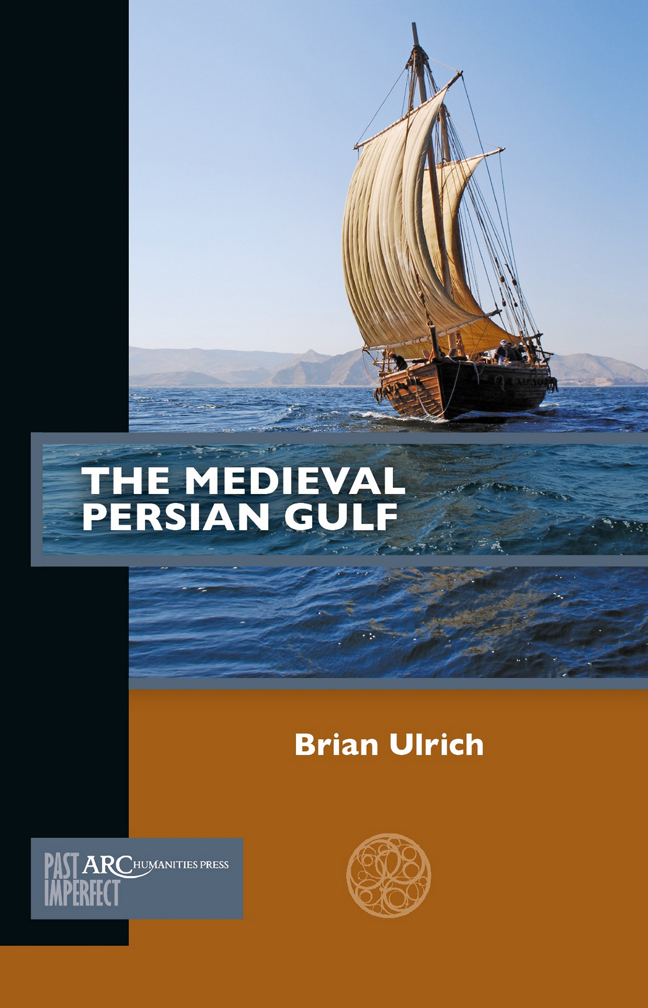Book contents
- Frontmatter
- Contents
- List of Illustrations
- Maps
- Timeline
- Introduction
- Chapter 1 Religious Diversity of the Early Islamic Era
- Chapter 2 Ethnic Diversity
- Chapter 3 The Society of Trade in the Early Islamic Period
- Chapter 4 New Trade Centres after 1000
- Chapter 5 Islamic Sects in the Late Medieval Gulf
- Chapter 6 Hormuz
- Conclusion
- Further Reading
Conclusion
Published online by Cambridge University Press: 20 February 2024
- Frontmatter
- Contents
- List of Illustrations
- Maps
- Timeline
- Introduction
- Chapter 1 Religious Diversity of the Early Islamic Era
- Chapter 2 Ethnic Diversity
- Chapter 3 The Society of Trade in the Early Islamic Period
- Chapter 4 New Trade Centres after 1000
- Chapter 5 Islamic Sects in the Late Medieval Gulf
- Chapter 6 Hormuz
- Conclusion
- Further Reading
Summary
The Portuguese came to power in the Gulf in part by exploiting the rivalries within the politics of Hormuz, particularly those between Arabs and Persians and kings and their viziers. They made Hormuz’s ruler into their vassal, and then gradually took more and more direct control of Hormuz’s government operations, though they seldom became involved further up the Gulf. Their presence reoriented the trade of some products towards Western Europe. The society and culture of the Gulf changed little, however, nor did most of the economic activity. The Gulf traders would even rally behind the Portuguese when their management of commercial life was seen as better than that of the Safavids, a dynasty which began ruling Iran at the same time. In this way, despite this book ending at a conventional delineation of what is “medieval,” that delineation is itself in many respects artificial.
The medieval history of the Gulf is important to the history of the medieval Middle East more generally. Particularly during the earlier centuries, its ports were among the largest cities in the region, a fact that is obscured by the fact they usually lasted for only short periods and so did not produce the sorts of texts produced for local pride that exist as pri mary source material for other areas. Yet Baghdad, Aleppo, and other centres would not have the culture they did if not for the Gulf. Many goods traded through the Indian Ocean network came to play an important role in elite and even non-elite culture throughout the region. The web of people, places, and practices through which they entered the region matters to understanding the formation of the whole culture.
Furthermore, while the medieval Middle East in general is more diverse than generally recognized, the Gulf region stands out for its direct connections to multiple regions of non-Middle Eastern cultures with a regular population of people voyaging to them and maintaining their livelihoods by those connections. The Gulf was a region of interconnection and mobility, seen archaeologically in the distribution of artifacts and historically in the movement of trading communities to new settlements when conditions merited. Although the landed empires occasionally sought to control it, the region consistently reasserted its autonomy. The Seljuq Qavurd Khan established authority by making the Gulf of Oman the centre of his domains, prefiguring Hormuz.
- Type
- Chapter
- Information
- The Medieval Persian Gulf , pp. 103 - 106Publisher: Amsterdam University PressPrint publication year: 2023

